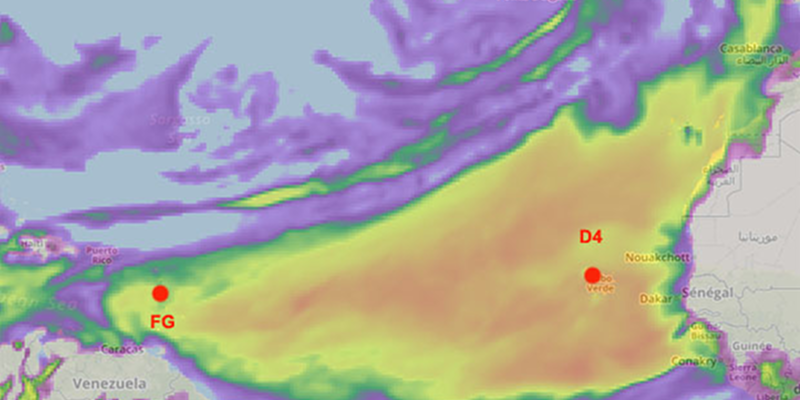We often think of ham radio operators talking to exotic faraway lands, and that’s true for hams using the HF bands (below 30 MHz), especially if they have nice antennas. Modern living has made it much harder to have those big antenna farms, and today’s ham is more likely talking on VHF or UHF frequencies with very limited range under normal circumstances. Sure, you can use a repeater or bounce your signal from a satellite or the moon, but normal direct communication is normally going to be less than a typical commercial FM radio station. But on April 7th, two hams communicated across the Atlantic on 432 MHz — a UHF frequency. The distance was almost 4,000 km.
Notice we didn’t say they talked, but they communicated. The contact was via a somewhat controversial mode called FT8 which uses weak signal techniques to allow two computers to send limited amounts of information to each other. However, on April 10, the two stations reported a single sideband voice contact after they noticed the band conditions improving on the FT8 signal.
The two stations had good equipment, but nothing out of the ordinary. FG8OJ in Guadeloupe used a 100W transmitter and an 18 element yagi which is not terribly large at that frequency. D4VHF was on the Cape Verde Islands at the time of the contact. FG4ST also made a connection with D4VHF using only a vertical antenna.
Propagation was, obviously, very good to allow this to happen (the image above is from F5LEN’s prediction for that day). The theory is that the signals rode close to the ocean waves in a mode known as ducting. There were other reception reports, so the incident wasn’t isolated.
Normally this kind of thing requires active or passive bouncing of a signal. Repeaters have a limited range. The moon and satellites can take you further but require some work. Hams have even used reflections from airplanes as an in-between solution.
















Reflections from airplanes? I’d love to learn more about that…
There is a previous HAD article: https://hackaday.com/2015/12/18/bouncing-radio-off-of-airplanes/
We do it regulary, every month there is a UHF contest, and the flightradar24 provides the beamdirection to the airplanes, so we can plan when to aim the antenna to a certain direction.
Or, I don’t do it, I don’t care for contest, but I have done transatlantic communication on 6m SSB.
Digital modes is like watching paint dry, you tell 2 or more computers to try to communicate on a GPS clock synced schedule, and leave them to it, sooner or later everything will align and they make contact and you get a notation that they have.
Is it really ham radio if they do it while you sleep?
It is like putting a robot on a golfcourse and make it hit balls 24/7 against a hole in the distance, sooner or later “you” will hit a hole in one, you might not even be on the golfcourse when “you” do it, but it is still as impressive as if you had done it yourself isn’t it?
Not really true at all. I contact people around the world in digital modes and I always attend to the station and communication. Maybe you should try it once or twice and learn how it really works.
Tropospheric ducting
They also talked between Capo Verde D4VHF and S.Lucia J69DF.